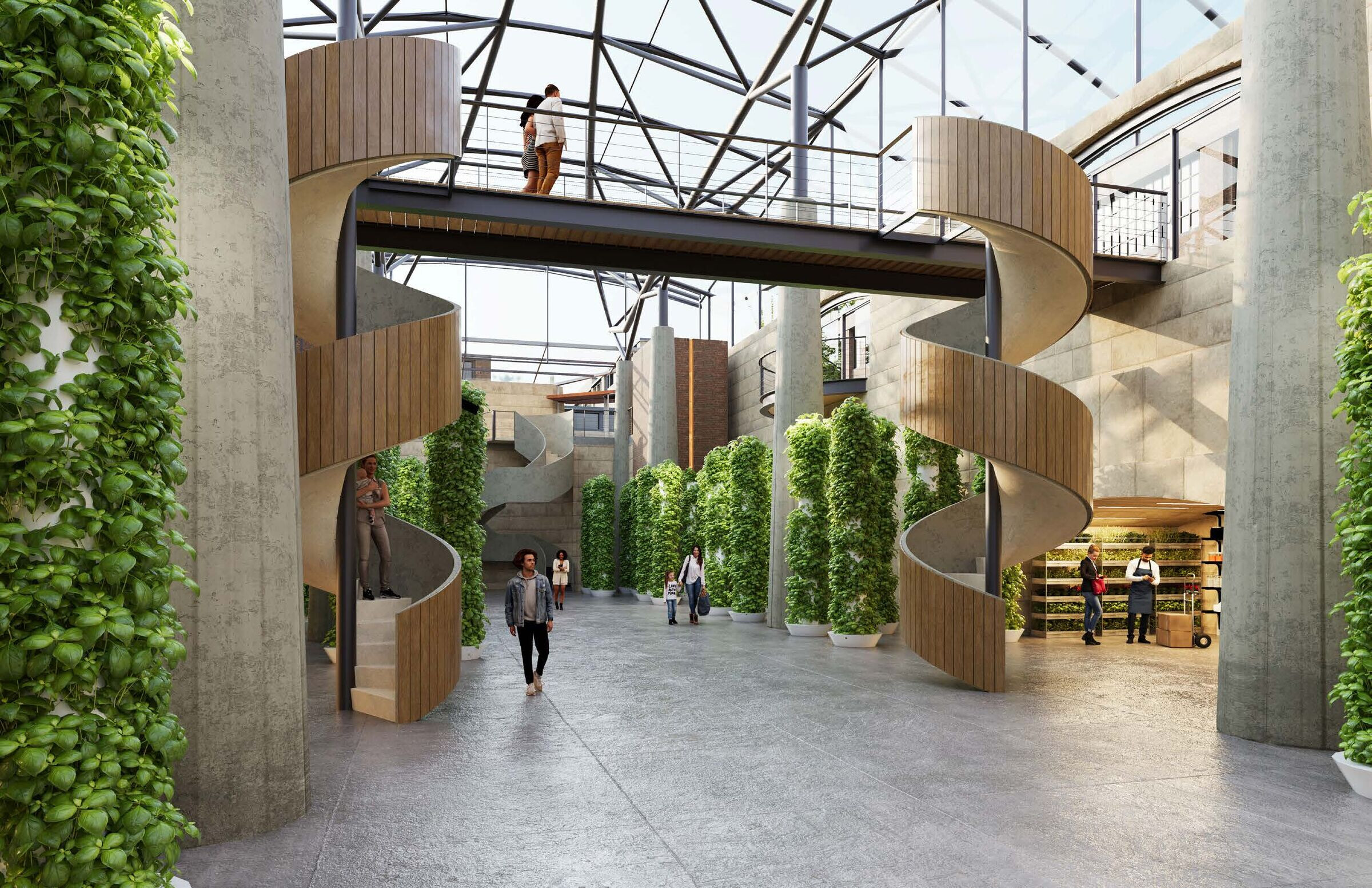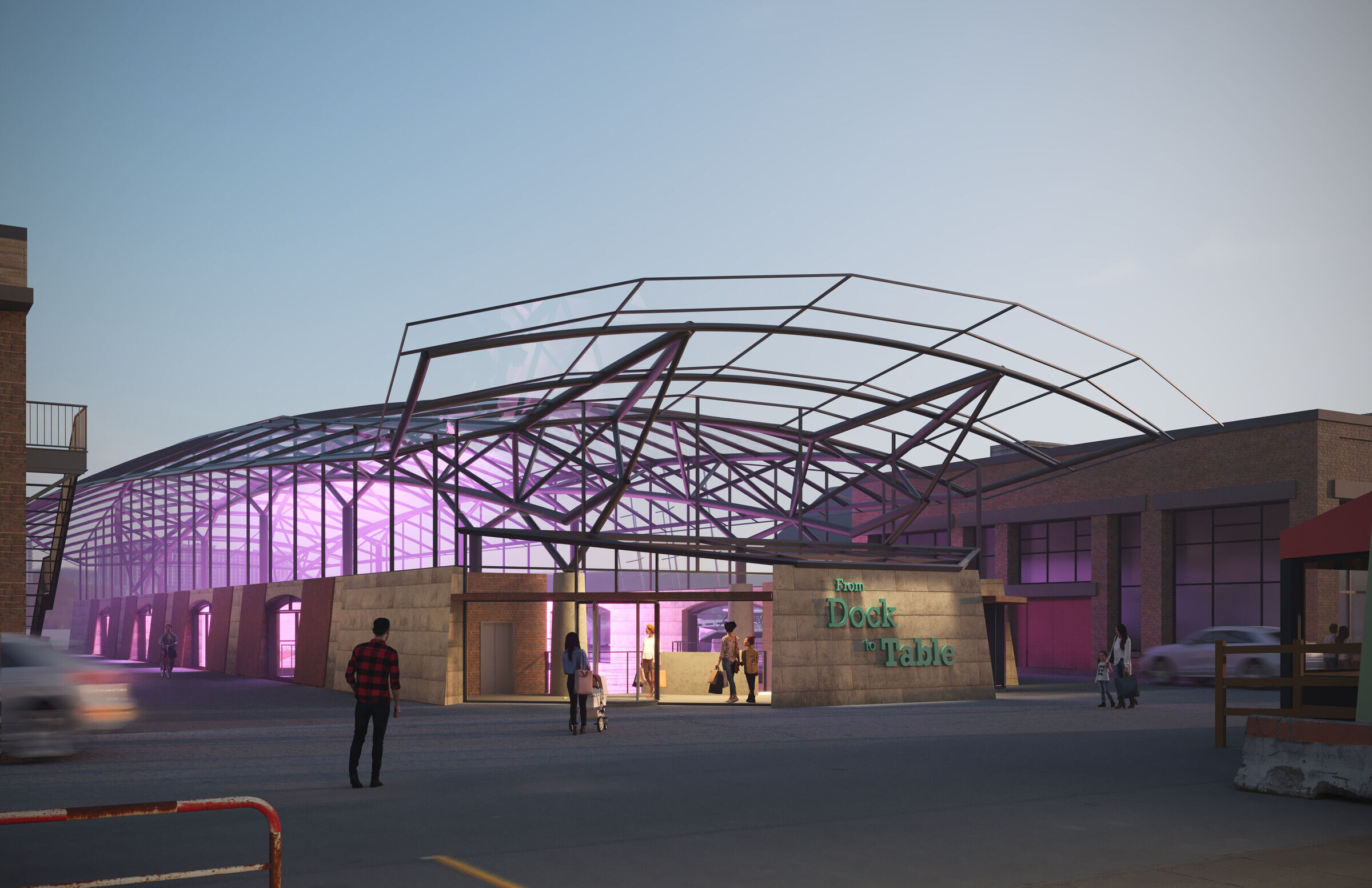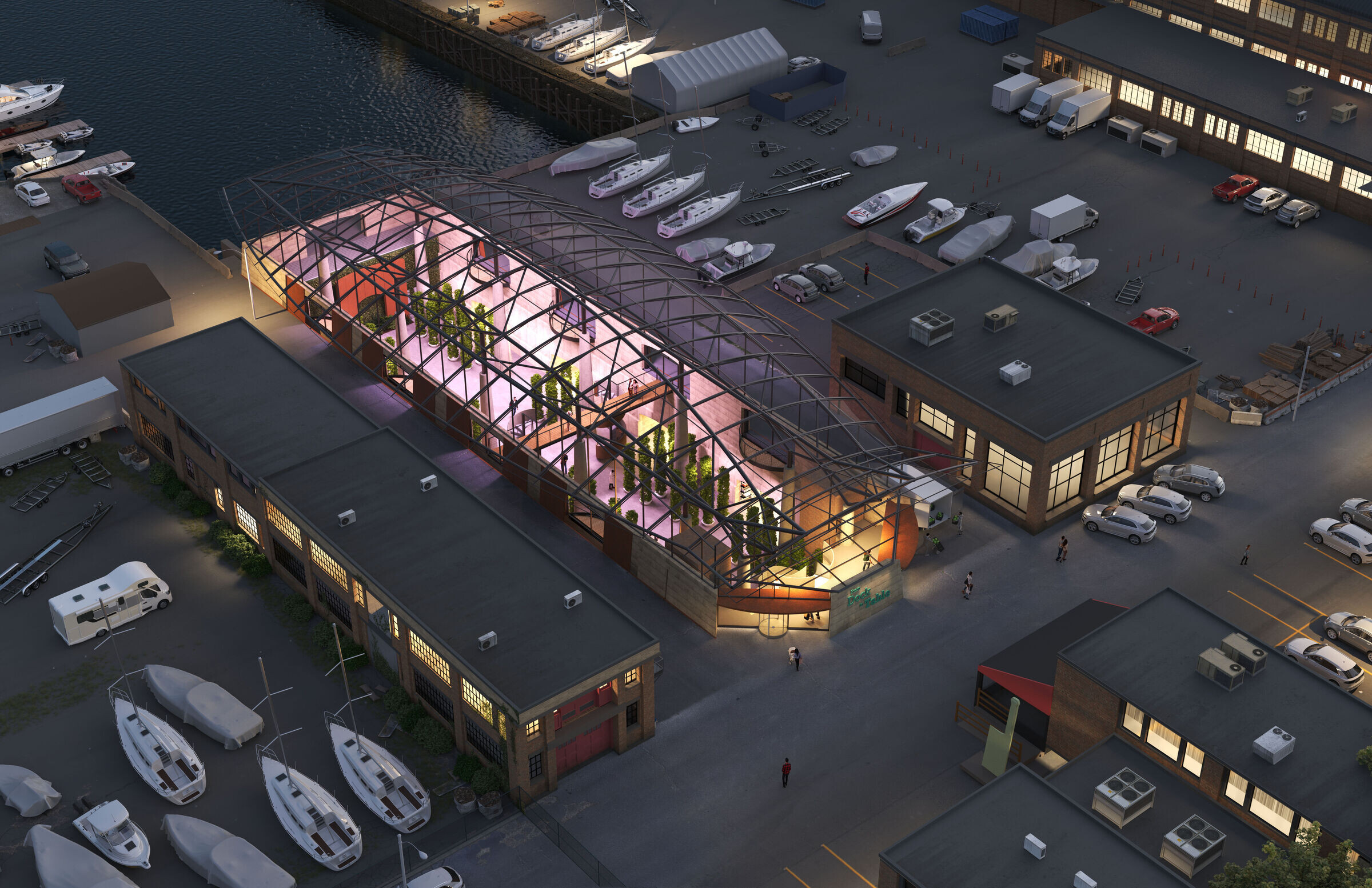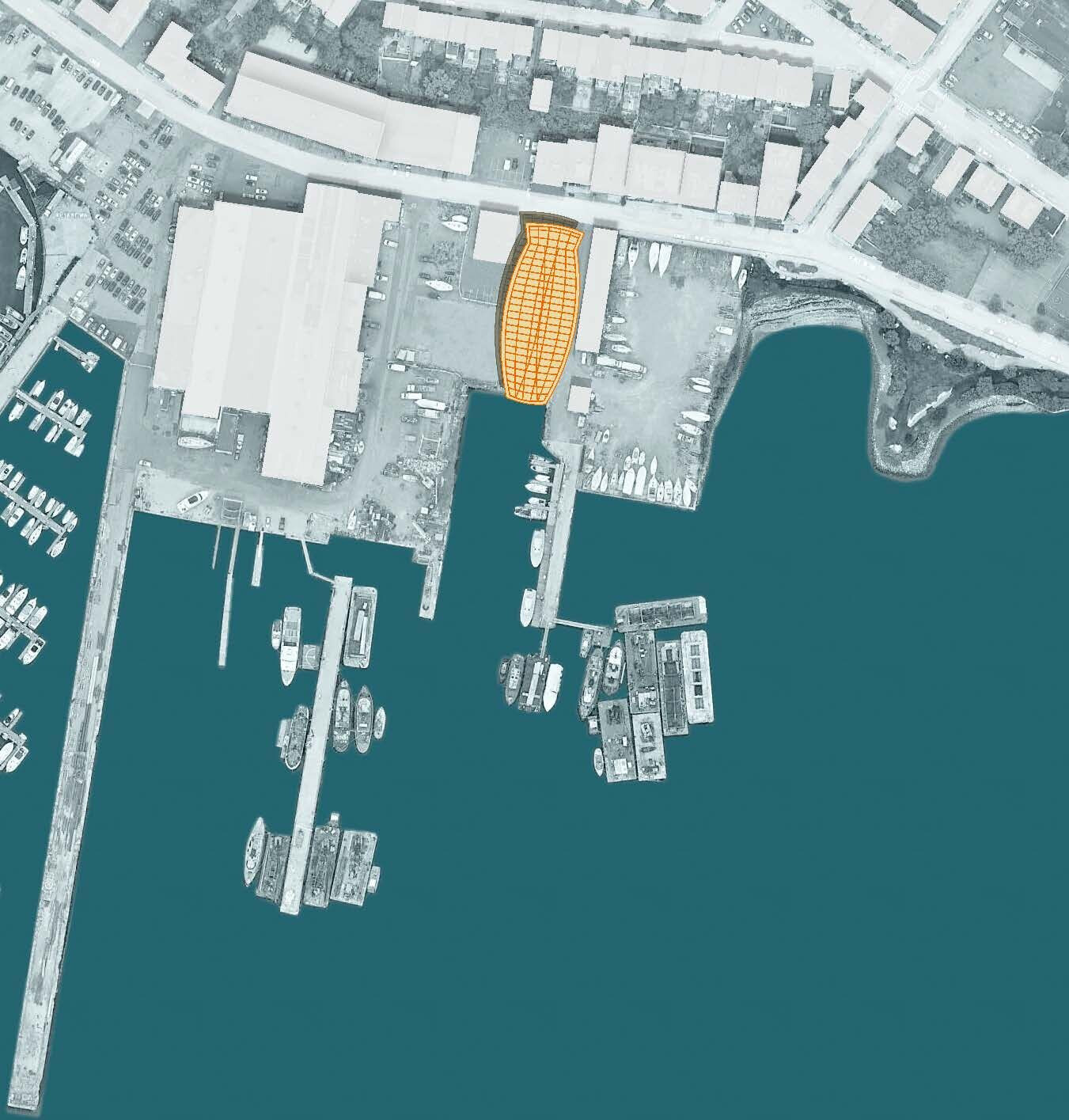Built in 1942, this East Boston dry dock is currently occupied by a fuel storage station – not very green. The location and structure of the dry dock present a unique opportunity to create an urban amenity that could be not only sustainable but regenerative.


We propose to close the dock gate so the dry dock can be built out and covered by a glass canopy. Powered by building-integrated photovoltaics (BIPV), the greenhouse utilizes vertical farming methods to provide year-round, local, healthy food. Vertical farming uses less land due to the arrangement of plants in towers. A ¼ acre vertical harvest farm can produce the same number of crops as 40 acres of farmland. The system also uses less water than farming, as it can be recycled and recirculated. The BIPV canopy also produces 56,000KwH/year, enough energy to power about 5.5 houses for a year.


This agri-voltaic approach could be coupled with the redevelopment of this district, creating a farm-to-table experience in which new local restaurants could participate. This concept could thus spark economic development and harvest renewable energy simultaneously. It could also serve as an educational destination for students.


The Dry Dock Greenhouse provides an additional urban amenity for the area and transforms an underutilized industrial site into a higher, regenerative use.




























